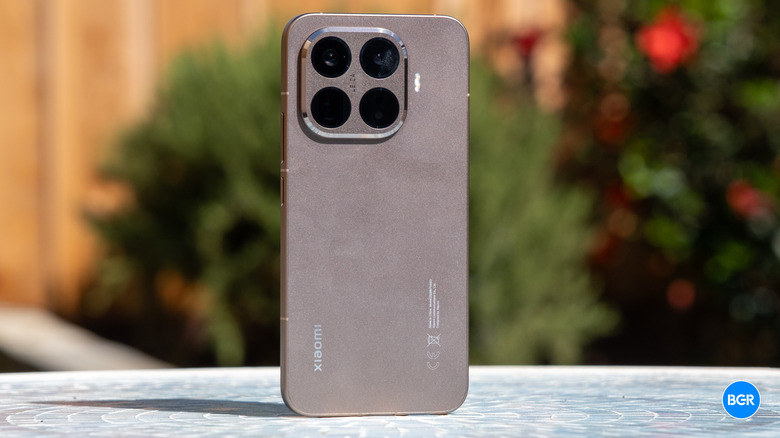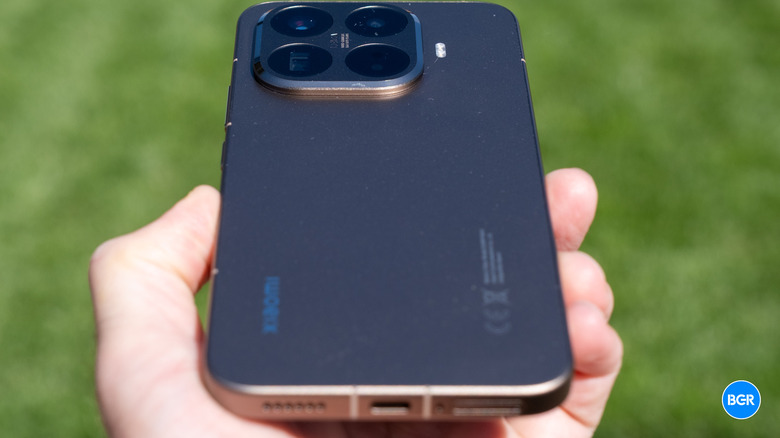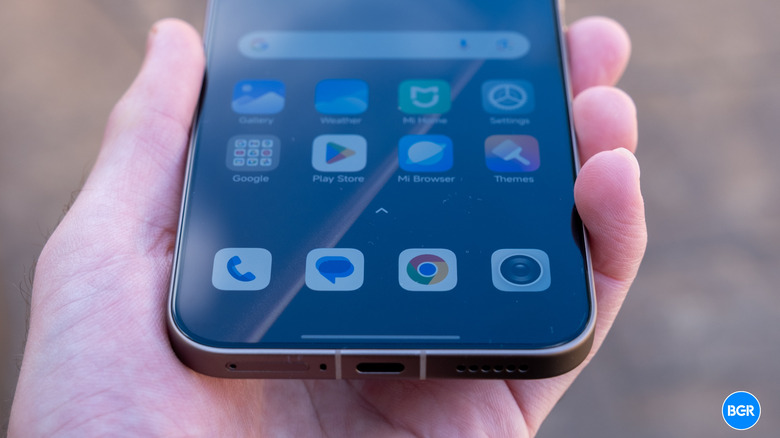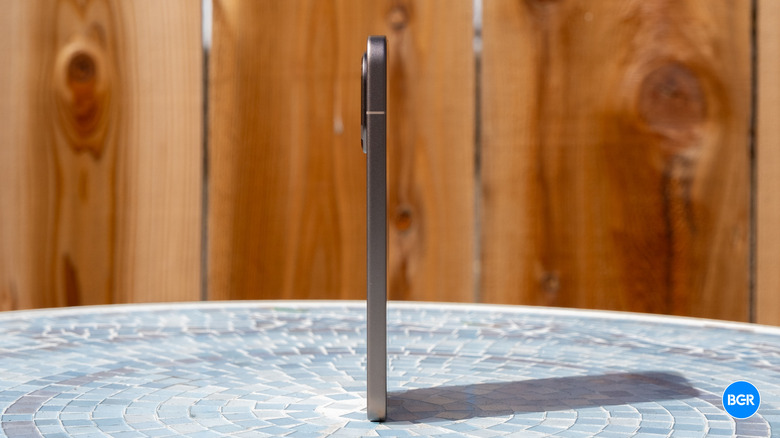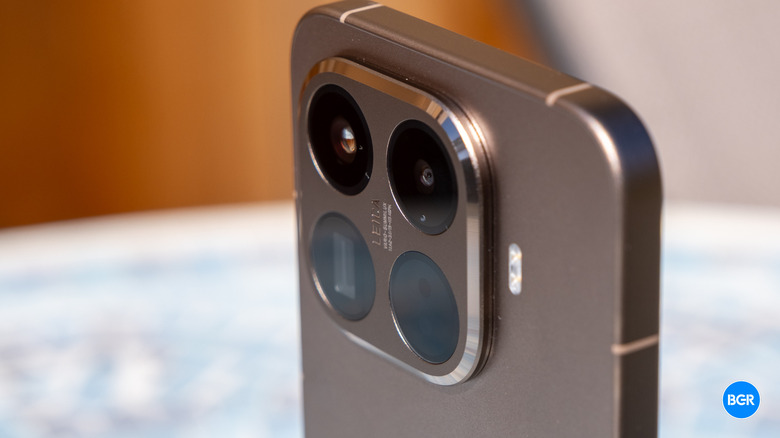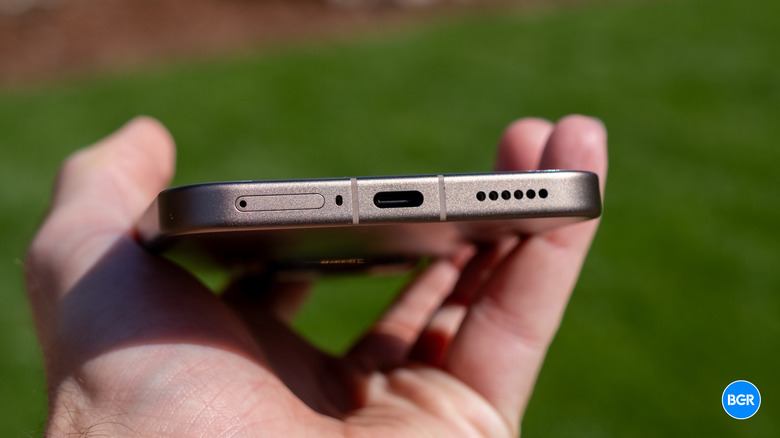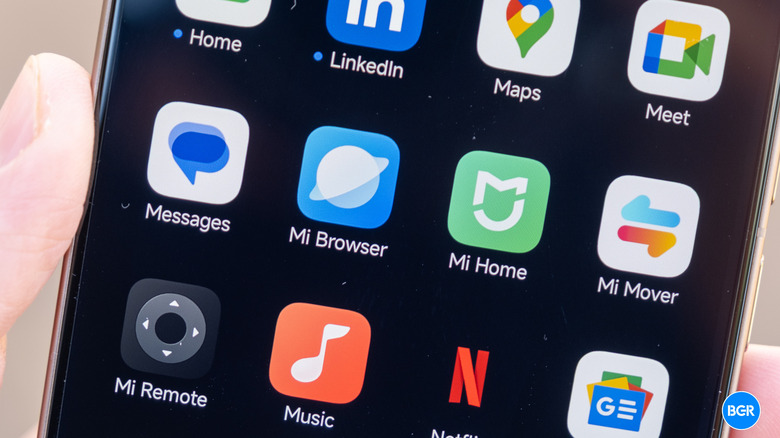Xiaomi 15T Pro Review: Inching Closer To Flagship
Xiaomi's smartphone lineup can be a little confusing at times, and this year, it's more confusing than ever. For example, the company launched the Xiaomi 15T this September and then immediately took the wraps off of the Xiaomi 17 series. Even more confusing is the fact that while "T" series phones are often positioned as slightly lower-cost than its non-T variants, the Xiaomi 15T Pro has some features that weren't available on the Xiaomi 15 Ultra.
Of course, the devices are available in different markets, which clears up some of the confusion. At its so-called "sub-flagship" price-point, is the Xiaomi 15T Pro worth buying? Or should you go for something else? I put the phone to the test to find out.
Xiaomi 15T Pro review: Design
The Xiaomi 15T Pro is yet another flat-edged smartphone that takes a lot of inspiration from the iPhone. That's not a bad thing. The phone looks refined and sleek, with color-matched materials on the frame and back. It doesn't have a unibody design, but it almost looks like it. The phone is available in a few different colors, including Mocha Gold, Black, and Grey. I have the Mocha Gold option and I really like the look of it. It has a matte aluminum frame with a matte fiberglass back, and it looks and feels premium.
On the back you'll find a large square camera module in the top left-hand corner which houses the three camera sensors. Everything else about the phone is more or less standard. There's a volume rocker and power button on the right edge and a USB-C port on the bottom. There's an optical fingerprint sensor built into the screen, and while it's perhaps not as high-tech as the ultrasonic sensors built into some of Xiaomi's other phones, it still worked quickly and accurately.
The phone is reasonably durable, too. The front glass is Gorilla Glass 7i, and the device has an IP68 rating, which means that it should survive accidental submersion in water. As a whole, the Xiaomi 15T Pro looks premium and offers a nice feel. It's comfortable to hold, too, thanks to the slightly rounded edges. And it has a great-feeling, precise haptic feedback system, which is always nice to see.
Xiaomi 15T Pro review: Display
On the front of the phone, you'll find a 6.83-inch AMOLED display, with a 144Hz refresh rate and a 3,200-nit peak brightness. It offers a reasonably high resolution, sitting in at 1,280 x 2,772, resulting in a pixel density of 447 pixels per inch. As a whole, the screen looks excellent. It may not be as bright as the displays in some of Xiaomi's other recent phones, but it still looks very bright and I found it easy to see content both indoors and outdoors, even in direct sunlight.
The only downside to this screen is the fact that it's not an LTPO panel, which means it can't quite adjust its refresh rate as dynamically as some other devices. It can still change refresh rate based on the content on the screen, but instead of being able to ramp up or down anywhere between 1Hz and 144Hz, it can switch between 30Hz, 60Hz, and 120Hz modes. None of this impacts how the screen looks, thankfully, but it does impact how much energy the screen uses. Still, rest assured, you're getting a great-looking screen on the Xiaomi 15T Pro. It's bright and vibrant and feels nice and smooth.
Xiaomi 15T Pro review: Performance
Under the hood, the Xiaomi 15T Pro is powered by a MediaTek Dimensity 9400 Plus coupled with 12GB of RAM. It's not MediaTek's most powerful chip. For now, that title goes to the Dimensity 9500, but it's still a great performing processor that can handle everything you can throw at it in 2025.
The phone also has Xiaomi's so-called 3D Ice Loop cooling system, which is a vapor chamber system that's larger on this phone compared to previous-generation ones. That should help it perform better for longer. I still found that it could heat up during extended gaming sessions, but that's largely to be expected. And to be fair, I was certainly trying to push the phone to its limits. It still handled these gaming sessions perfectly well, and it never skipped or froze during multitasking either.
To be clear, the phone won't perform quite as well as a device with the Dimensity 9500, nor one with the Qualcomm Snapdragon 8 Elite Gen 5. It also lags behind smartphones with the latest generation Qualcomm Snapdragon 8 Elite. In terms of raw performance, it beats the Pixel 10 series, though, so expect it to perform somewhere in between the Pixel 10 and the Galaxy S25. While you may not really feel any lags in performance right now, as the phone ages, you may find that it starts to slow down sooner than an even better-performing phone would.
Xiaomi 15T Pro review: Camera
On the back of the Xiaomi 15T Pro, you'll find a triple camera system made up of a 50-megapixel main camera, a 50-megapixel periscope telephoto camera with 5x optical zoom, and a 12-megapixel ultrawide camera with a 120-degree field of view. Generally speaking, the images captured by the device looked stunning. In well-lit environments, images were bright and vibrant while remaining relatively accurate. Xiaomi is still working with Leica for the color science of its photos, and you can choose between a few different profiles. I mostly stuck to the default Leica Authentic profile.
With its 5x optical zoom, I found that the telephoto camera produced excellent results too. Sometimes, telephoto cameras that zoom this far can result in a gap between the main camera and telephoto camera where you can see how digital zoom is used at 4x or so. Thankfully, images zoomed at 4x still looked quite good, even though they of course did use digital zoom. I did find that the camera was a little inconsistent when it came to colors — images taken with the telephoto camera looked a little different than those taken with the main camera.
The phone lets you zoom at up to 100x and uses generative AI to add more detail to images taken past 20x. I found that it did a pretty good job at delivering a final image that stayed true to what was in the actual scene. Though, of course, at the maximum 100x zoom, things do look a little funky.
The ultrawide camera is pretty good, too, though perhaps not quite as impressive as the main and telephoto cameras. I'm still able to capture pretty vibrant shots most of the time, and I was still able to capture as much detail in low light. That, of course, is a pretty niche situation, and the main and telephoto cameras still did a good job when it came to low-light photography. As a whole, the camera system built into the phone is excellent.
Xiaomi 15T Pro review: Battery and charging
The Xiaomi 15T Pro is powered by a 5,500mAh battery, and I found that it was able to get me through a full day of even heavier use. But if you're expecting a multi-day battery, you may be disappointed. Again, the battery is perfectly fine, and if you remember to charge up either overnight or at some point during the day, you probably won't have any issues with it. It's just not as long lasting as some of the phones with larger batteries.
The device supports 90W wired charging, which is very fast, and that means that you should be able to fully charge in around 36 minutes. It also supports 50W wireless charging with a Xiaomi HyperCharge wireless charger, but it can also work with a Qi wireless charger.
Xiaomi 15T Pro review: Software
As usual, one of the biggest things holding the phone back is its software experience, but it's not terrible. The phone runs Xiaomi's HyperOS 2, running on Android 15. Like other Xiaomi phones, you'll get things like a separate control center and notifications shade, and you can choose between having an app drawer or all your apps on home screens. It's obviously a stylized look, and you'll have to decide for yourself if you like it or not.
What you probably won't like is the amount of bloatware on the device. You'll get a range of additional apps pre-installed out of the box, including things like AliExpress, Amazon Music, TikTok, and LinkedIn. There are also duplicate apps, like Google's Files app and Xiaomi's File Manager. Some of these can be deleted — like LinkedIn -– but others can only be hidden from your home screen. Still, the software generally looks and feels perfectly fine. There's a lot going on, but it still felt relatively responsive, which is always helpful.
Conclusions
The Xiaomi 15T Pro has a lot going for it. With a sleek design, a great camera, and solid performance, there's really nothing bad about it. Sure, it doesn't quite compete with more expensive devices -– but it also shouldn't have to. At around 800 euros, there are other alternatives, but rest assured the Xiaomi 15T Pro is an excellent phone overall.
The competition
The competition to the Xiaomi 15T Pro largely varies depending on your region. This phone is mostly built for Europe, and in Europe, it competes with the likes of the Samsung Galaxy S25 FE, which I would argue has better software. It's also worth considering the Realme GT7 Pro, which will perform better than the Xiaomi 15T Pro. That said, if you're looking for a great camera, solid performance, and sleek design, the Xiaomi 15T Pro may be the phone for you.
Should I buy the Xiaomi 15T Pro?
Yes. It's a great phone at a good price.
